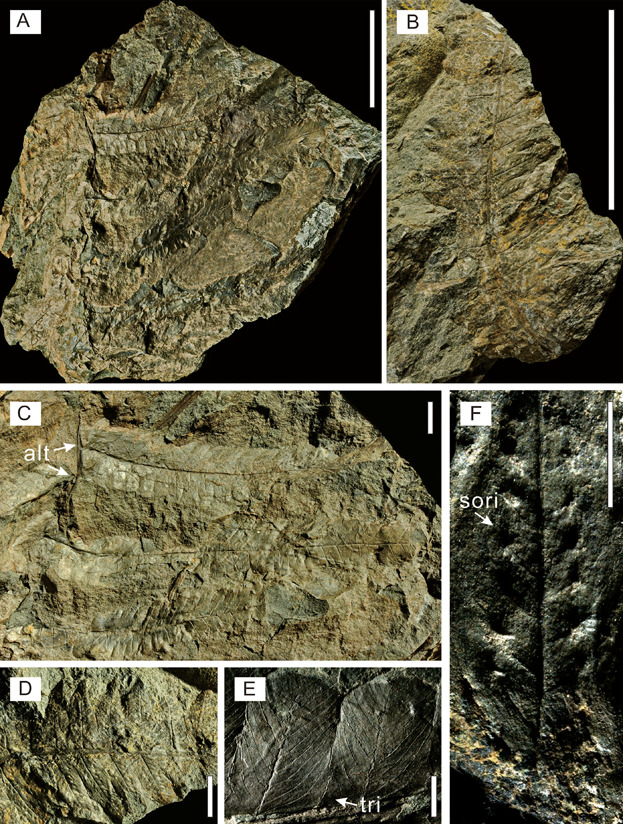Ferns are the second largest group of vascular plants with about10,000 extant species. Christella is a genus within Thelypteridaceae that has proven complicated in delimiting generic boundaries. Christella comprises approximately 70 species and grows in wet, dense or semi‐open forests at relatively low elevations, mainly in tropical and subtropical regions.
The southeastern margins of the Qinghai–Tibetan Plateau (QTP) and adjacent areas are rich in extant fern species. Some Cenozoic fern fossils have been reported from this region. However, compared with the abundant extant fern species, fossil records of many fern groups, including those of Christella (Thelypteridaceae), are still far from fully investigated, which limits the current understanding of regional fern biodiversity.
Researchers from Paleoecology Group of Xishuangbanna Tropical Botanical Garden (XTBG) collected specimens of ferns from Tibet and Jinggu in SW Yunnan. The frond fossils from both sites share key morphological characteristics that diagnose these fossils as Christella.
After detailed morphological comparison, the researchers placed the specimens to Christella by the venation type, intensity of lobed segments, and in situ sori patterns.
The researchers chose 14 living species in Christella for further morphological comparison with their fossils. The fossil specimens share two important morphological characters, namely the shape of the pinna and pattern of the sori.
Together with previous fossil records and comparison with C. nervosa, the researchers propose that Christella has a long evolutionary history and diverged no later than the late Paleocene (about 56 million years ago).
“Modern species in Christella are mainly distributed in dense forests or semi‐open forests with high humidity in tropical and subtropical regions at low elevations worldwide. Thus, the fossils that we uncovered from Yunnan and Tibet might indicate humid and warm climates judging by the present distribution of this genus”, said Dr. SU Tao of XTBG.
The study entitled “Occurrence of Christella (Thelypteridaceae) in Southwest China and its indications of the paleoenvironment of the Qinghai–Tibetan Plateau and adjacent areas” has been published online in Journal of Systematics & Evolution.
Contact
SU Tao Ph.D Principal Investigator
Key Laboratory of Tropical Forest Ecology, Xishuangbanna Tropical Botanical Garden, Chinese Academy of Sciences, Mengla, Yunnan 666303, China
E-mail: sutao@xtbg.org.cn

Christella nervosa from the Liuqu Formation, southern Tibet, China.
(Images by XU Congli)

